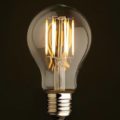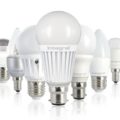In an effort to reduce energy consumption and promote more environmentally friendly lighting options, the UK and EU have announced a ban on fluorescent tubes and compact fluorescent light bulbs (CFLs). This ban will have a significant impact on businesses and households, as these types of lighting have been widely used for decades. In this article, we will discuss the details of the ban and explore alternative lighting options.
The Ban
The ban on fluorescent tubes and CFLs will come into effect on February 1st, 2024. This means that these types of lighting will no longer be available for manufacture or import into the UK and EU. The ban is part of the EU’s Ecodesign Directive, which aims to reduce energy consumption and promote more sustainable products. The ban will apply to all types of fluorescent tubes and CFLs, including those used in offices, homes, and public spaces.
Why the Ban?
Fluorescent tubes and CFLs have been popular lighting options due to their energy efficiency and long lifespan. However, they also contain mercury, a toxic substance that can be harmful to both humans and the environment. When these types of lighting are disposed of improperly, the mercury can leak into the environment and cause pollution. The ban aims to reduce the amount of mercury in circulation and promote safer and more sustainable lighting options.
Time-line of the light bulb ban:
1st September 2009
- Clear Incandescent light bulbs of 100W and above
- Non-clear (frosted or pearl) 100W lamps must have an energy rating of A or better
- 100W and above equivalent LED light bulbs are available
1st September 2010
- Clear Incandescent light bulbs of 75W and above
- 60 W class D and E (≥ 725 lm) Halogen bulbs
- Non-clear (frosted or pearl) 75W lamps must have an energy rating of A or better
- 75W equivalent LED light bulbs are available
1st April 2010
- Standard Halophosphate tubes, can no longer be manufactured or imported into the EU. In the vast majority of cases, these can be replaced by the equivalent Triphosphor tube. The Triphosphor tubes are longer life, higher efficiency and improved colour rendering compared to their Halophosphate versions. LED replacements of most Fluorescent tubes are also now widely available.
1st September 2011
- Clear Incandescent light bulbs of 60W and above
- 40 W class D and E (≥ 450 lm) Halogen bulbs
- Non-clear (frosted or pearl) 60W lamps must have an energy rating of A or better
- 60W equivalent LED light bulbs are available
1st April 2012
- Fluorescent T12 (38mm diameter) tubes are withdrawn. These are inefficient compared with their T8 (26mm) or T5 (16mm) counterparts. Most T12 tubes can simply be replaced by their equivalent length fluorescent T8 tube
1st September 2012
- Clear Incandescent light bulbs of 40W and above
- 25 W class D and E (≥ 60 lm) Halogen bulbs
- Non-clear (frosted or pearl) 40W lamps must have an energy rating of A or better
- 40W equivalent LED light bulbs are available
1st September 2013:
- Bulbs capped S14, S15 and S19
1st February 2016
- Amendments to the original directive were introduced, more clearly defining ‘rough service’ and ‘special purpose’ light bulbs. This closed a loophole that allowed retailers to continue to make incandescent light bulbs that would otherwise have been covered by the ban.
1st September 2016
- Directional Halogen lamps (such as halogen PAR and halogen GU10 spotlights)
- LED replacement GU10 are available
1st September 2018
- All remaining Non-Directional Halogen lamps (halogen GLS, candles, golfballs)
- LED GLS, LED candles and LED golfballs replacements are available
1st October 2021
- Self-Ballasted Compact Fluorescent (CFL-i) integrated retrofit lamps (caps B22, E27 etc)
- Linear Halogen R7s lamps over 2,700 lumens
- 12V Halogen reflectors lamps (MR11/GU4, MR16/GU5.3 etc)
- Lower performing LED lamps
- New energy labels regulation changes announced
1st September 2023
- Mains voltage Halogen capsules with G9 cap
- 12V Halogen capsules with G4/GY6.35 cap
- Linear Fluorescent T8 linear lamps 2 foot, 4 foot, 5 foot
1st February 2024
- Compact Fluorescent non-integrated with plug-in bases (CFLni) including CFL 2D
- Linear Fluorescent T8 lamps 18 inch, 3 foot, 6 foot
- Linear Fluorescent T5 linear lamps
- SON Deluxe lamps
24th February 2025
- Non-linear Triphosphor Fluorescent lamps with a tube diameter >17mm and mercury content >10mg i.e. Fluorescent T9 Circular
- Note that not all T9 Circular lamps will be banned as many have a mercury content of less than 10mg
- Long-life Compact Fluorescent lamps <30W, >20,000 hours
Alternative Lighting Options
With the ban on fluorescent tubes and CFLs, businesses and households will need to find alternative lighting options. One of the most popular alternatives is LED lighting. LED light bulbs use significantly less energy than fluorescent tubes and CFLs and do not contain any toxic substances. They also have a longer lifespan, making them a more cost-effective option in the long run. LED light bulbs are available in a variety of shapes and sizes, making them suitable for all types of lighting needs.
Another alternative is halogen bulbs. These bulbs are more energy-efficient than traditional incandescent bulbs and do not contain mercury. However, they do have a shorter lifespan compared to LED light bulbs. Halogen bulbs are also available in a variety of shapes and sizes, making them a versatile option for different lighting needs.
Impact on Businesses and Households
The ban on fluorescent tubes and CFLs will have a significant impact on businesses and households. Businesses that currently use these types of lighting will need to switch to alternative options, which may require some initial investment. However, the long-term cost savings and environmental benefits make it a worthwhile switch. Households will also need to replace any fluorescent tubes and CFLs with alternative lighting options. This may be a good opportunity for households to switch to more energy-efficient lighting and reduce their energy bills.
The ban on fluorescent tubes and CFLs in the UK and EU is a significant step towards promoting more sustainable and environmentally friendly lighting options. Businesses and households will need to adapt to this change and switch to alternative lighting options such as LED or halogen bulbs. While this may require some initial investment, the long-term benefits make it a worthwhile switch. Let’s all do our part in reducing energy consumption and promoting a greener future.




